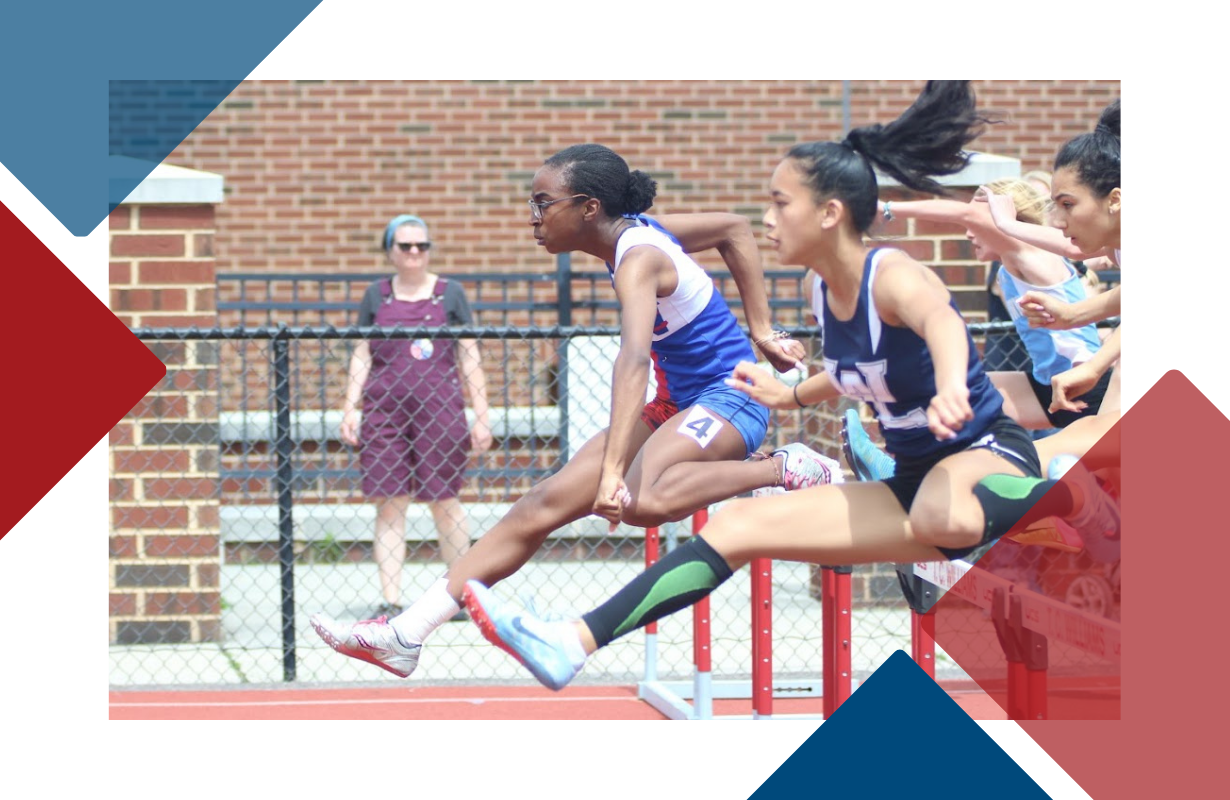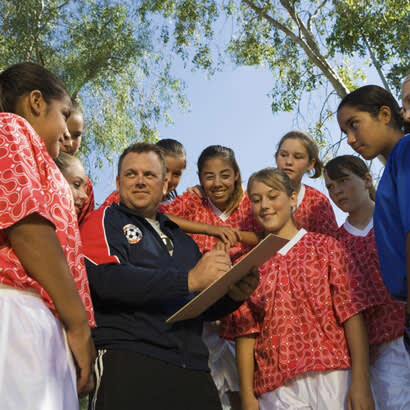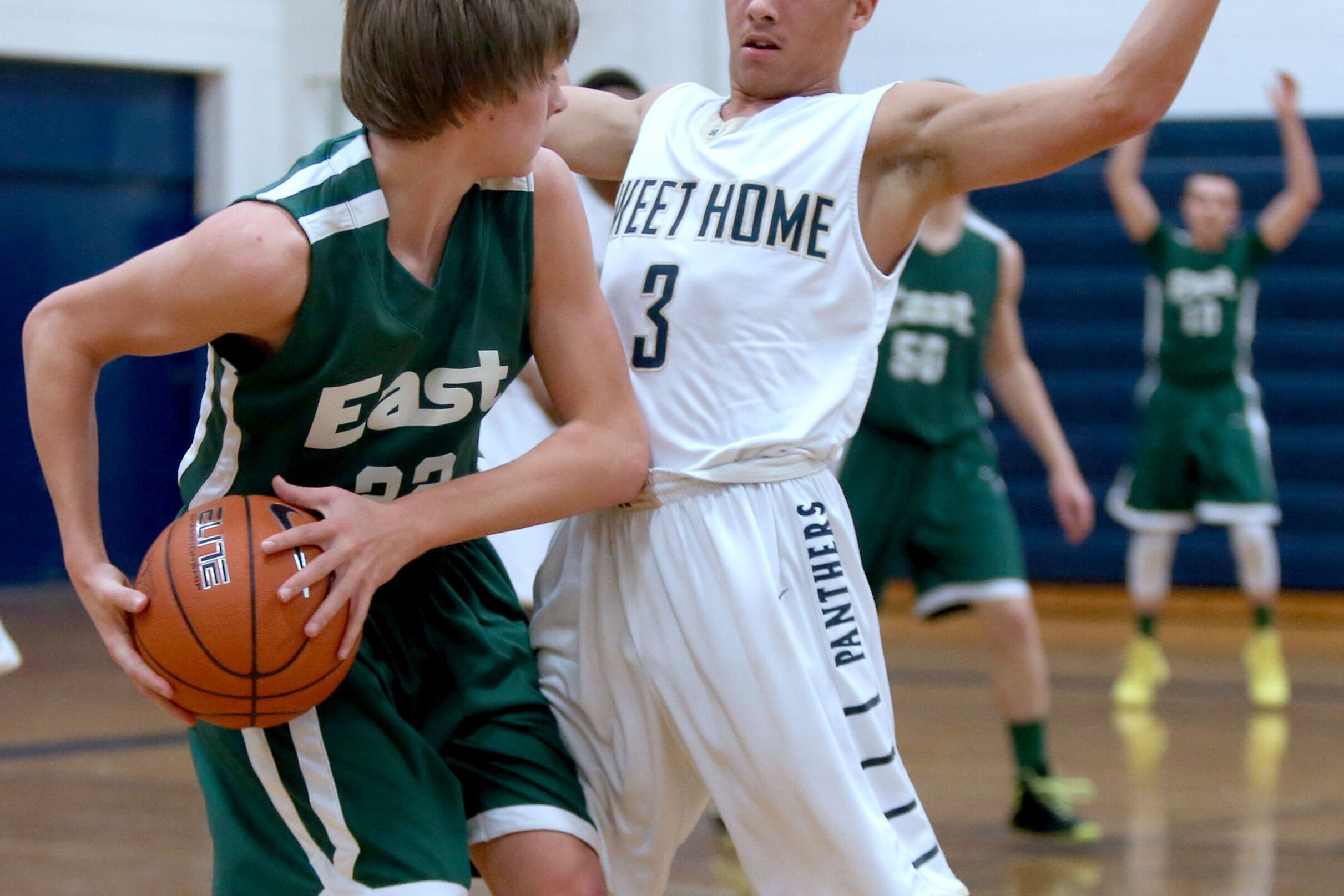Imagine a United States where recent college graduates devote one year to national service – and doing so benefits youth sports organizations in the process. That’s beginning to happen through Tennis for America, a pilot program that places recent college tennis players into four lower-income communities for one year to mentor youth and grow the sport.
Some of the fellows are starting tennis programs for high schools that don’t have them. Some are teaching nonprofits how to more effectively use the internet to reach more youth and provide greater efficiency in programming. All of them are tutoring youth who live in poverty.
Project Play Infographics
To help you make the case for
why youth sports matters
Tennis for America launched in June as a partnership between the Intercollegiate Tennis Association, AmeriCorps VISTA and National Junior Tennis & Learning. There are four host sites – New York Junior Tennis & Learning (Bronx, New York), Sloane Stephens Foundation (Compton, California), Junior Tennis Champions Center (College Park, Maryland), and XS Tennis (Chicago).
And if the architect of Tennis for America can pull it off, tennis is just the start. He has dreams of scaling the model so national service grows coaches and quality access for youth in many other sports that traditionally face cost barriers.
“It’s such a powerful idea to marry sport with national service, and it’s really the first time the country has invested in such an idea,” said John Bridgeland, former White House domestic policy director under George W. Bush and White House community solutions council member under Barack Obama, who came up with the Tennis for America concept as CEO of the public policy firm Civic.
National service was one idea discussed Aug. 5 during the “The Rebuild We Need Now,” the second of four conservations this summer hosted by the Aspen Institute’s Project Play initiative. Project Play is working to build America’s new state of play – the theme of this year’s Project Play Summit, which is going virtual for the first time and spread over four days (October 13-16).
Between now and then, Project Play will identify a set of ideas that can rebuild America with the help of community-based sports. They will be codified in Project Play’s platform for action that we will help stakeholders mobilize around during Summit week. The next conversation is Aug. 26 and will explore how to provide more accountability in the sports system, from improving coach quality to controlling costs to reducing injury rates.
At the Aug. 5 discussion, attended by more than 300 people, part of the conversation focused on infrastructure opportunities. In a nonscientific poll, 48% of the audience said the recreational infrastructure they most want to see in their community is athletic facilities, such as fields, gyms and rinks.
Each speaker presented three ideas for Project Play to consider including in its platform for action. Here are some highlights from the discussion:
RONDA JACKSON, SENIOR ADVISOR, GOVERNMENT AFFAIRS, KABOOM!
Platform for action ideas:
Triple the size of the Outdoor Recreation and Legacy Partnership Program from $100 million annually to $300 million. Expand the use of those funds to include youth sports and recreation programs run by local government agencies and nonprofits in high-need, historically disinvested communities.
Either increase or include funding within the Corps Act for National Services to provide at least 1,000 minimum-wage paid internships for low-income youth across the nation. The interns could serve as support staff for sports and recreation programs in their communities run by local government and non-profits.
Provide an additional $300,000 of funding per project within the Choice Neighborhoods Program. This would provide for building and maintaining play and recreation spaces and youth sports programming throughout our nation’s public housing systems.
Current state of playgrounds and play spaces: “It’s similar to the state of the rest of our infrastructure, which is in disrepair and inequitable. A lot of those inequities are because of decades of policies and practices that were racialized and really left communities of color isolated and economically distressed, without the access to basic public entities like playgrounds, swimming pools and recreation centers. … We’re really concerned that COVID will only increase these disparities. … We need playgrounds that really incorporate the latest digital and virtual technology into the experience. We need playgrounds and play spaces that also are a part of a city’s resiliency strategy, which is really important now.”
KABOOM! is keeping an eye on these federal bills: The Great American Outdoors Act was signed into law this week by President Donald Trump, committing $900 million a year of permanent funding for the Land and Water Conservation Fund plus a one-time boost of $9.5 billion for national parks to catch up on maintenance. KaBoom! is also watching the Rebuild America’s Schools Act and the Highway Trust Fund as possible sources for future school and recreation infrastructure.
J.J. TIGHE, DIRECTOR, PARKS & TRAILS INITIATIVE, RALPH C. WIlson, Jr. Foundation
Platform for action ideas:
Lean in on dedicated funding for parks and trails.
Build a leverage funding framework that’s hard to say no to.
Dedicate 20% or more of your investment to sustainability.
Why recommitting to the Land and Water Conservation Fund matters: “It’s a big win for communities and their abilities to take care of assets across the United States. … One thing to highlight is this is a really important precedent that sets aside (money) for maintenance and the backlog at national parks. That provides a great start on changing the dialogue and sustainability of funding as we look at the federal transportation bill.”
Value of planning financial investments for future use: “As part of our commitment of $200 million (to build trails and recreational spaces in Southeast Michigan and Western New York), we set aside 20% for the sustainability of these spaces so they’re preserved for future generations to use. … A lot of these federal and state sources are focused on building (projects). I think we need to have a tougher discussion upfront about how these are going to be maintained and how communities are going to handle the lifecycle costs of these to make sure they’re accessible for everybody in their neighborhood and also there for future generations.”
ANDREW FERENCE, DIRECTOR OF SOCIAL IMPACT, GROWTH, and LEGISLATIVE AFFAIRS, NHL
Platform for action ideas:
Have government entities identify access to sport and recreation as a basic human right and essential to the sectors of health, education and the justice system.
Have established values placed on recreation and sport facilities based on the value that sport brings to the sectors of health, education and the justice system. What is it worth to our communities and countries to have “X” more people involved in sport and recreation?
Measure the success of the sport system and government contribution to the sports and recreation system based on metrics about health, education and the justice system – as opposed to the success of Olympic and national-level elite sport.
Current quality of ice hockey rinks: “The U.S. and Canada line up very similarly with infrastructure. Many rinks were built around the same times. … In Canada, 19% of rinks are 50 years old plus, 35% are between 31 and 49 years old, and 17% are between 21 and 30 years old. … The reinvestment rate in Canada is only 1.3% and the stated need for reinvestment is over $9 billion to replace rinks that are in very poor condition. … We’re nowhere near close to that with the funding that’s come through.”
Barriers to addressing facility deficits: “The way (governments) measure success is about medals. How did we do at the Canada Winter Games? How many Olympic athletes came out of this? How did our elite sport team perform at this competition? It’s ludicrous. … When I look at sport for a government, how does it help us in other areas where we’re spending money? … It’s an investment in our public health care. It’s an investment in our education system. It’s an investment in keeping kids out of the justice system. I don’t hear many politicians or many people talking about how that is the value of sport, that’s why we need to reinvest in these facilities, and that’s why we need kids to be active in sport.”
JOHN BRIDGELAND, FOUNDER & CEO, CIVIC
Platform for action ideas:
Scale Tennis for America as a human capital solution and expand capacity from four pilot sites in year 1 to 25 sites in year 2 and 50 sites in year 3.
Engage other sports to pilot test models, such as Soccer for America, Lacrosse for America, Basketball for America, etc.
Foster a partnership between Service Year Alliance (a joint venture initiative of the Aspen Institute) and Project Play to ensure the models advance Project Play’s goals.
Why national service is needed: “National service got its start in America focused on infrastructure and development. Franklin Roosevelt called Congress into an emergency session during the Great Depression, and within a couple months, they had 250,000 young, unemployed men working in our parks and public land. Over the life of the program, 3 million young, unemployed men planted 3 billion trees, preserved 84 million acres of land, created 800 national, state and local parks, and saved a generation from festering in the streets in poverty. National service is a focus right now for post-COVID given record levels of youth unemployed.”
Trying national service in other sports: “The energy we’ve seen both from the private sector and the federal government to support (Tennis for America) has been really encouraging. The funding can be there. We’re working to scale up national service opportunities from about 75,000 a year to hopefully up to 250,000 or more. Our goal is eventually 1 million or more a year. (Pac-12 Conference Commissioner) Larry Scott is very interested in taking the Tennis for America model and expanding it for Soccer for America, Football for America, Lacrosse for America. … The chair of Service Year Alliance is four-star general Stanley McChrystal. He’s very firm about goals and achievements, so we’re following this Tennis for America model very closely.”
Do you have a topic that you would like Project Play to explore in future COVID-19 youth sports coverage? Email Jon Solomon at jon.solomon@aspeninstitute.org.
























